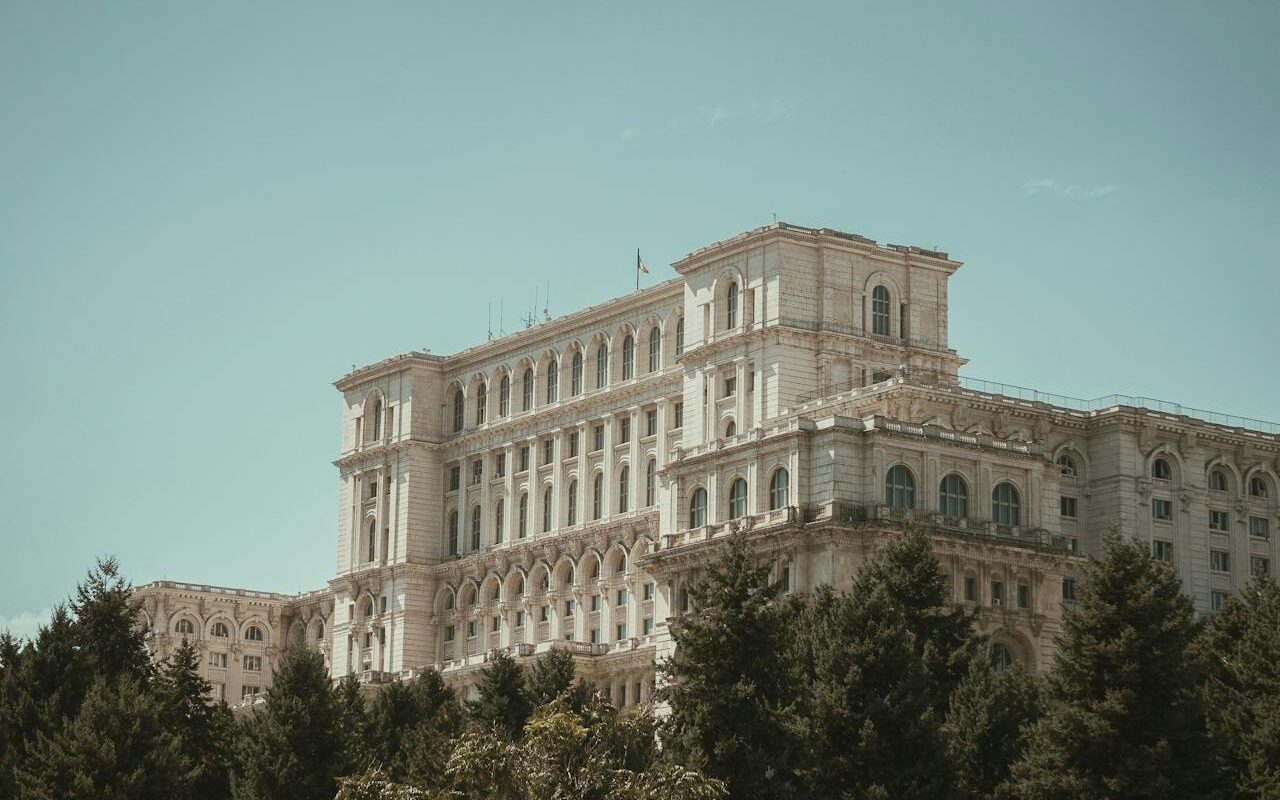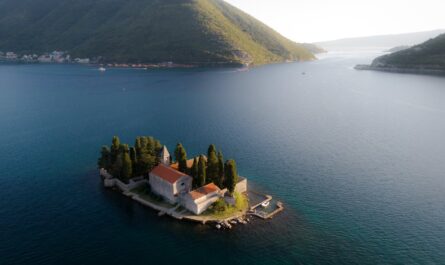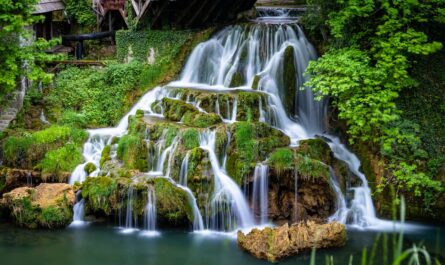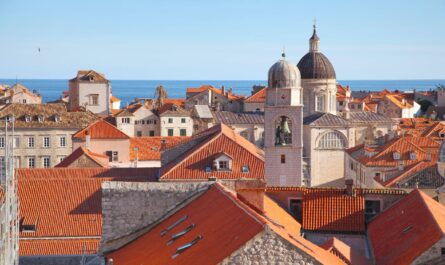Bucharest, the capital of Romania, boasts a unique blend of history, culture, and architectural wonders. One such marvel is the Palace of the Parliament, a colossal structure that stands as a testament to Romania’s communist past. Built during the era of Nicolae Ceaușescu, the Palace of the Parliament is a symbol of grandiosity, ambition, and the controversial legacy of communism in Romania.
A Monument of Superlatives:
The Palace of the Parliament, also known as the People’s House, holds several records, making it a landmark not just in Romania but globally. Covering an astonishing 330,000 square meters, the palace is the heaviest building in the world, constructed with more than one million cubic meters of marble, 3,500 tonnes of crystal, and 900,000 square meters of wood. The sheer scale and opulence of the structure are unparalleled, reflecting Ceaușescu’s desire to create a monumental legacy for himself and his regime.
Communist Ambitions:
The construction of the Palace of the Parliament began in 1984, at a time when Romania was under the rule of Nicolae Ceaușescu, the General Secretary of the Romanian Communist Party. Ceaușescu envisioned the palace as a symbol of the might and prestige of the Romanian socialist republic. The project, however, came at a tremendous cost to the people, both financially and socially.
The Human Cost:
The construction of the Palace of the Parliament required the demolition of large parts of Bucharest’s historic city center, displacing thousands of residents and destroying churches, synagogues, and other cultural landmarks. The human toll was significant, with many families forcibly relocated, and countless cultural artifacts lost forever. The construction process itself was plagued by reports of poor working conditions, with laborers enduring long hours and harsh conditions.
Post-Communist Romania:
The fall of communism in Romania in 1989 brought an end to Ceaușescu’s regime and marked the beginning of a new era for the country. The Palace of the Parliament, despite its controversial origins, stands as a tangible reminder of Romania’s tumultuous past. In the post-communist period, the palace has been repurposed, hosting the Romanian Parliament, museums, and international conferences.
Preserving History:
While the Palace of the Parliament remains a divisive symbol, efforts have been made to acknowledge its historical significance and preserve the memories of the past. The building itself has become a tourist attraction, drawing visitors from around the world who are eager to explore its vast halls, opulent chambers, and learn about Romania’s complex history.
Continuing the Journey through History:
As visitors walk through the vast corridors and lavish rooms of the Palace of the Parliament, they are transported back to a time of political intrigue and ideological fervor. The guided tours offer insight into the architectural intricacies, the stories behind the construction, and the impact it had on the lives of ordinary Romanians. One can’t help but marvel at the craftsmanship that went into creating this behemoth, even as the grandiosity contrasts sharply with the grim realities of its inception.
Architectural Marvels and Controversies:
Designed by architect Anca Petrescu, the Palace of the Parliament exhibits a unique architectural style that blends neoclassical and totalitarian elements. The sheer scale of the building is awe-inspiring, with its massive halls, intricate staircases, and ornate decorations. Yet, this architectural marvel is not without controversy. The use of costly materials and the forced displacement of residents fueled public discontent during its construction, a sentiment that persists to this day.
A Symbol of Transformation:
In the post-communist era, Romania faced the daunting task of reclaiming its identity and healing the wounds of the past. The Palace of the Parliament, once a symbol of oppression, underwent a transformation into a seat of democracy. The halls that once echoed with the footsteps of authoritarian leaders now resound with the debates and discussions of elected representatives.
Cultural Resilience:
Bucharest, often referred to as the “Little Paris of the East,” is a city that has weathered political storms and emerged stronger. The Palace of the Parliament, with its imposing presence, has not overshadowed the city’s vibrant cultural scene. Bucharest’s artistic and creative communities have flourished, embracing both the traditional and the contemporary. The juxtaposition of historic landmarks and modern expressions of art and culture creates a dynamic atmosphere that encapsulates the spirit of a city in constant evolution.
Challenges of Preservation:
Preserving a structure of such magnitude comes with its own set of challenges. The maintenance of the Palace of the Parliament requires ongoing efforts and resources. The delicate balance between conservation and modernization is a topic of debate, as the authorities strive to ensure that the building remains a symbol of historical significance while meeting the practical needs of contemporary governance.
Walls: The Surrounding Legacy:
While the Palace of the Parliament dominates the landscape of central Bucharest, its presence has spurred the revitalization of the surrounding areas. The once-neglected neighborhoods have undergone a process of renewal, with the construction of parks, pedestrian areas, and cultural spaces. Local businesses, cafes, and art galleries have sprung up, creating a vibrant atmosphere that complements the grandiosity of the palace. The surrounding districts have transformed into hubs of activity, serving as a testament to the resilience and adaptability of the city.
International Impact:
The Palace of the Parliament has not only left an indelible mark on Romania but has also gained recognition on the international stage. Hosting numerous conferences, summits, and events, the palace has become a symbol of Romania’s diplomatic engagement and a venue for fostering international relations. The juxtaposition of diplomatic discussions within the walls that once echoed with authoritarian decrees highlights the transformative journey that Romania has undertaken.
Educational Initiatives:
In acknowledging the complex history associated with the Palace of the Parliament, educational initiatives have emerged to provide a nuanced understanding of Romania’s past. Museums and exhibitions within the palace showcase the stories of those affected by its construction, shedding light on the social and human dimensions of this monumental project. These efforts aim to ensure that the younger generation, both Romanian and international, remains informed about the country’s history and the impact of ideological decisions on society.
Challenges and Dialogues:
The legacy of the Palace of the Parliament also fuels ongoing societal dialogues about the responsibilities of preserving and interpreting historical landmarks. Debates about how to represent the complex history of the palace, including the darker chapters, underscore the importance of acknowledging the multifaceted nature of historical narratives. Striking a balance between acknowledging the past and moving forward poses a challenge, but it’s a challenge that encourages societies to reflect on their history and foster meaningful conversations about collective memory.
Looking to the Future:
As Romania continues to evolve, the Palace of the Parliament stands as a guardian of the nation’s past, present, and future. The challenge now is to ensure that this architectural marvel not only survives the test of time but also serves as a catalyst for positive change. Perhaps, in its towering walls and echoing chambers, there lies the potential to inspire future generations to pursue a path of inclusivity, openness, and civic engagement.
Conclusion
Bucharest’s Palace of the Parliament is more than a relic of a bygone era; it is a living, breathing entity that continues to shape the city’s landscape, foster international dialogue, and serve as a canvas for cultural expression. Its story, though rooted in the complex history of communism, extends far beyond the political narrative. As Romania embraces its democratic identity, the palace stands as a reminder of the nation’s ability to adapt, learn from its past, and build a future that reflects the values of its resilient people.




